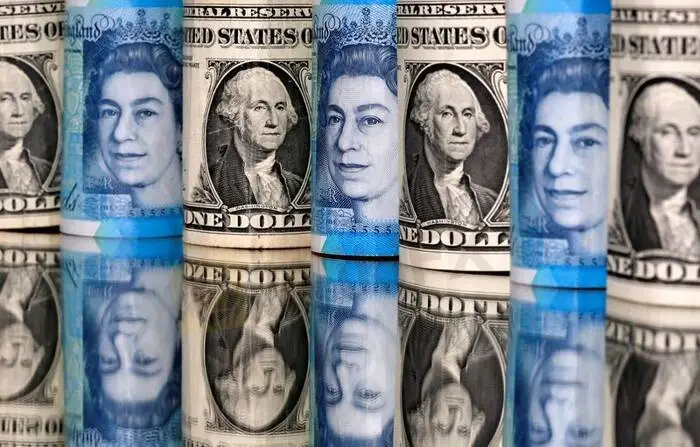简体中文
繁體中文
English
Pусский
日本語
ภาษาไทย
Tiếng Việt
Bahasa Indonesia
Español
हिन्दी
Filippiiniläinen
Français
Deutsch
Português
Türkçe
한국어
العربية
Dollar near two-week high amid jitters over hawkish Fed, Ukraine tensions
Abstract:The safe-haven U.S. dollar hovered near a two-week high against its major peers on Tuesday amid escalating worries about both a faster pace of Federal Reserve policy tightening and potential military conflict in Ukraine.

The Australian dollar rose briefly after strong consumer price numbers boosted the case for a Reserve Bank interest rate increase this year.
The Fed begins a two-day policy meeting later in the global day, and investors will be anxious for any hints on the timing and pace of rate hikes, as well as about how fast the central bank will shrink its more-than $8 trillion holdings of Treasuries and mortgage debt.
Money markets are priced for a first rate hike in March, with three more quarter-point increases by year-end.
The dollar index, which measures the greenback against six major peers, edged up slightly to 95.920, after climbing as high as 96.135 overnight for the first time since Jan. 10.
“The case for the Fed potentially following up a March rate rise before the June meeting – even as early as April – is a very compelling one, and there is a risk that the market will still have to reprice,” said Ray Attrill, head of FX strategy at National Australia Bank in Sydney.
“The geopolitical risk has just added a new layer of safe haven support.”
Markets until recently had mostly shrugged off the massing of Russian troops on Ukraines borders, but tensions have ratcheted up lately. NATO said it was putting forces on standby and reinforcing eastern Europe with more ships and fighter jets, in what Russia denounced as an escalation of tensions.
ING Bank strategist Francesco Pesole said markets were pricing more of a risk premium into the euro, with fears increasing that Russias stand-off over Ukraine with the West could prompt Moscow to curb energy supplies to Europe.
The euro slipped 0.08% to $1.1323, leaving it near the middle of its range of the past week. Overnight it fell as low as $1.1291 for the first time since Jan. 10.
The dollar eased slightly to 113.87 versus fellow safe haven the yen, after recovering from a one-month low of 113.47 touched in the previous session.
The Aussie traded 0.09% higher at $0.7150 after briefly climbing as much as 0.45% as a key inflation gauge jumped to a 7 1/2-year peak.
Many analysts contend that such a pace will force the RBA into a rate hike this year, despite Governor Philip Lowe previously maintaining that such an eventuality was extremely unlikely.
Money markets have long been at odds with the RBAs dovish stance, and are priced for a rate hike by June.
“The numbers are clearly well above the RBA‘s own forecasts for inflation, so the chances they will have to capitulate on their previous guidance are rising by the day,” said NAB’s Attrill.
At the same, “the numbers simply validated the position of the money markets,” he said, adding that explained why the Aussie didnt have a sustained rally.
Cryptocurrencies traded weaker, but were well off the lows tested at the start of the week. Bitcoin changed hands at close to $36,500, after dipping below $33,000 on Monday for the first time in six months. It has halved in value since touching a record $69,000 in November.
Smaller rival ether last traded around $2,440, following its dive to a six-month low of $2,160.

Disclaimer:
The views in this article only represent the author's personal views, and do not constitute investment advice on this platform. This platform does not guarantee the accuracy, completeness and timeliness of the information in the article, and will not be liable for any loss caused by the use of or reliance on the information in the article.
Read more

Will the Euro and US Dollar Reach Parity in 2025?
Euro-dollar parity sparks debate again as 2025 approaches, with multiple factors shaping the exchange rate outlook.

US Dollar Surge Dominates Forex Market
The global forex market continues to show volatility, with the U.S. dollar fluctuating last week but overall maintaining a strong upward trend. How long can this momentum last?

Oil Prices Soar for 5 Days: How Long Will It Last?
Last week, the global oil market saw a strong performance, with Brent crude and WTI crude prices rising by 2.4% and around 5% respectively. Oil prices have now posted five consecutive days of gains. But how long can this rally last?

How Big is the Impact of the USD-JPY Rate Gap on the Yen?
The U.S. Federal Reserve's repeated rate cuts and the narrowing of the U.S.-Japan interest rate differential are now in sight. So, why is the U.S.-Japan interest rate differential so important for the yen’s safe-haven appeal, especially when global economic uncertainty rises?
WikiFX Broker
Latest News
Wolf Capital Exposed: The $9.4M Crypto Ponzi Scheme that Lured Thousands with False Promises
Confirmed! US December non-farm payroll exceeded expectations
Spain plans 100% tax for homes bought by non-EU residents
90 Days, Rs.1800 Cr. Saved! MHA Reveals
The Yuan’s Struggle: How China Plans to Protect Its Economy
LiteForex Celebrates Its 20th Anniversary with a $1,000,000 Challenge
400 Foreign Nationals Arrested in Crypto Scam Raid in Manila
Singapore Blocks Polymarket Access, Following U.S. and France
OneZero Collaborates with Ladies Professional Golf Association (LPGA)
Housewives Scammed of Over RM1 Million in Gold Investment Fraud
Currency Calculator






